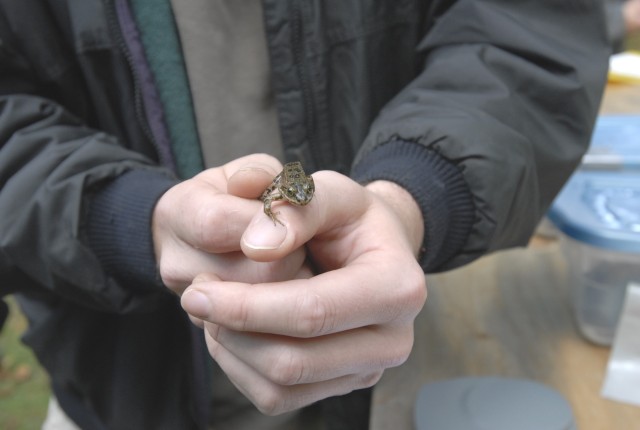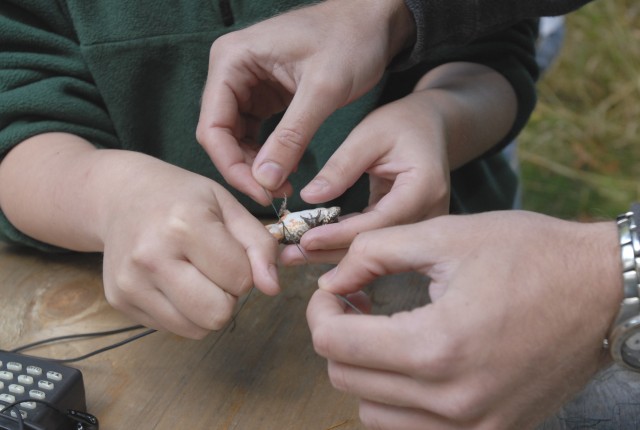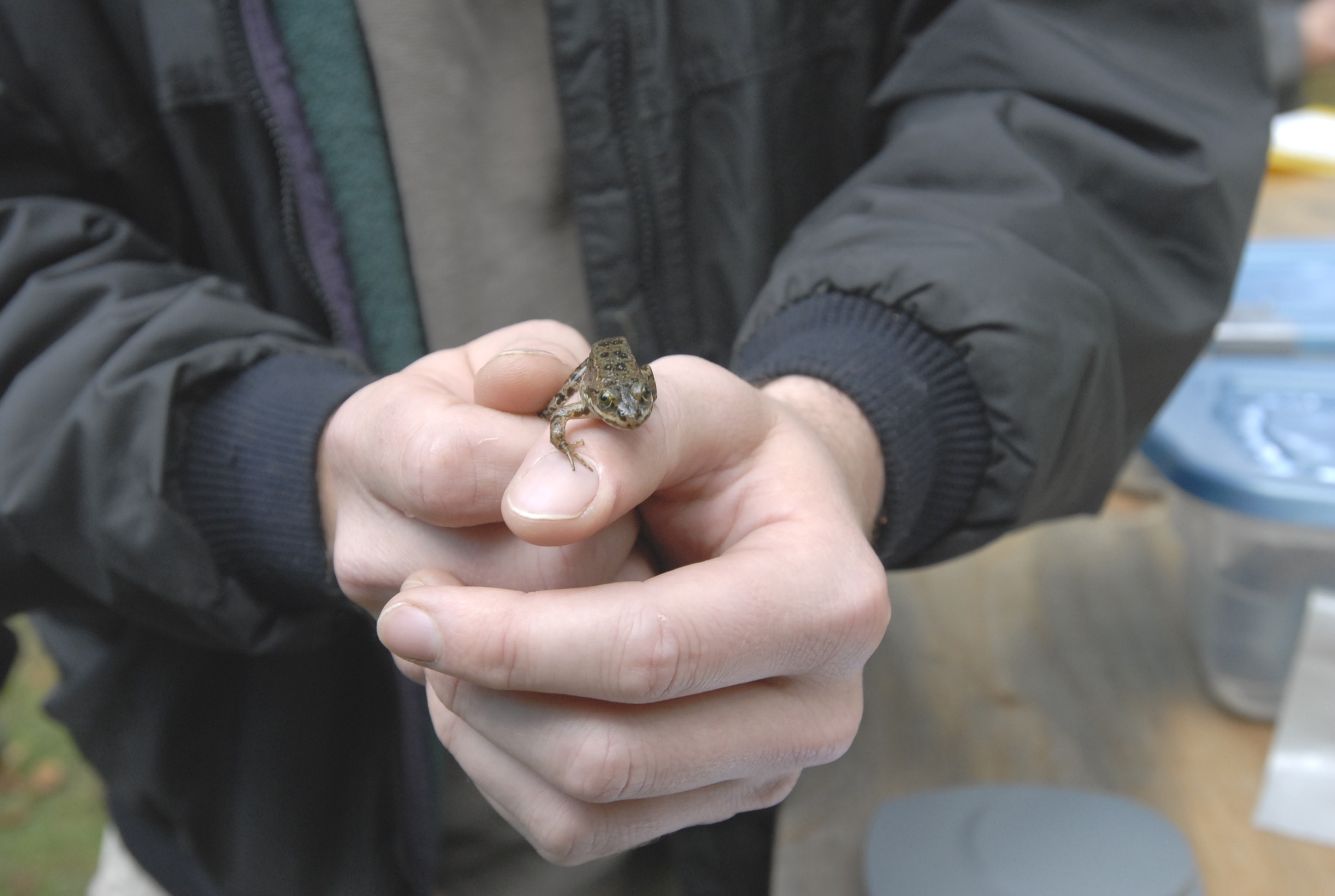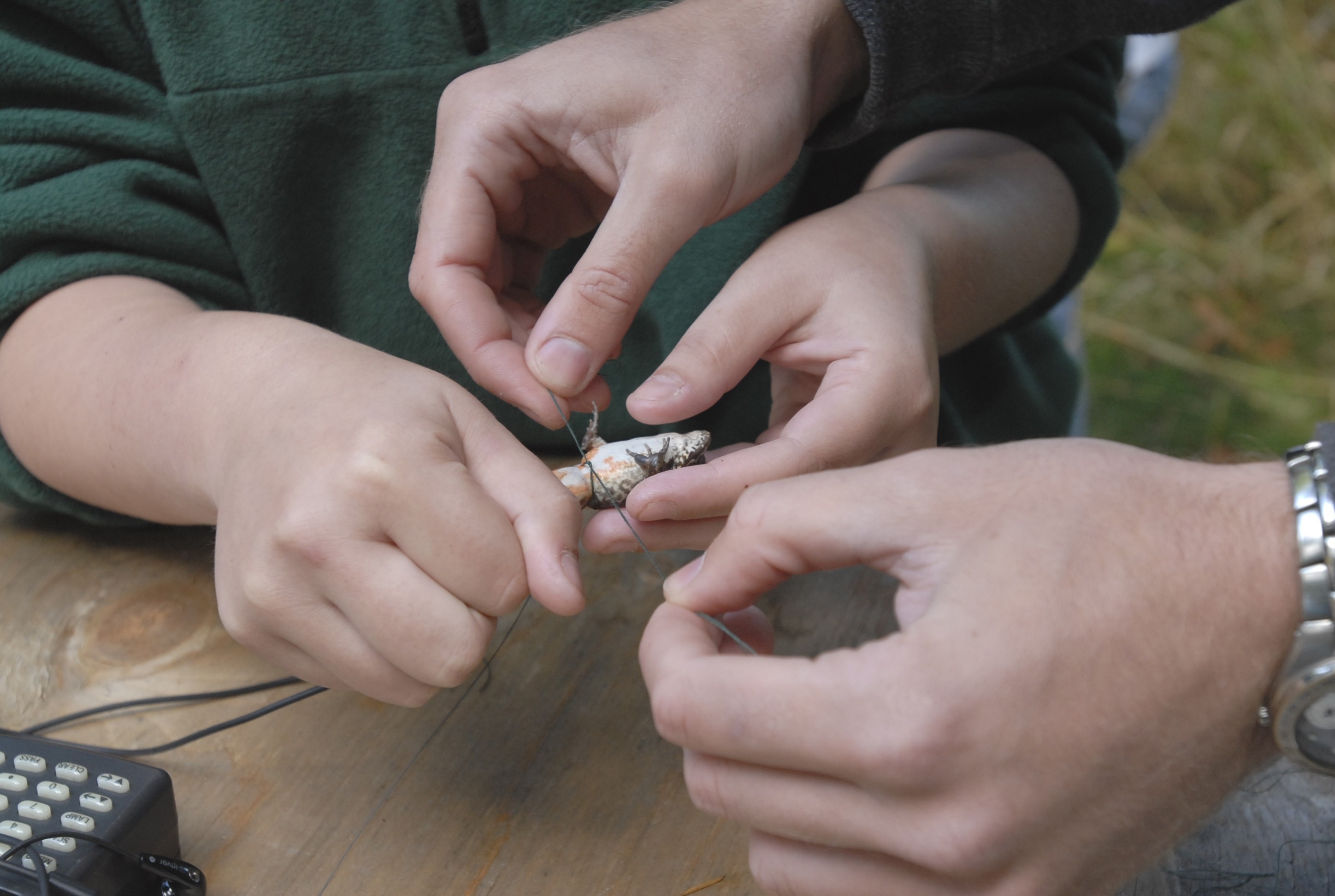FORT LEWIS, wash. - This tree and prairie-covered post witnessed an unusual amphibious assault Monday morning.
Biologists from Fort Lewis, the Washington Department of Fish and Wildlife, and Northwest Trek Wildlife Park released 536 juvenile Oregon spotted frogs back into the wild at Dailman Lake on post. The amphibian was placed on the Washington state endangered species list in 1997 and is a candidate for the federal list.
"We're going to try to reintroduce the species here," said Jim Lynch, Fort Lewis Fish and Wildlife biologist of the frog. "Under our installation sustainability program, we have a goal to recover all rare and listed species in the region, and this is another step towards completing those goals."
This is part of the I Corps goal of maintaining exceptional quality-of-life programs and facilities for Soldiers, warriors in transition, and their families.
"It's not going to interfere with our military training," Lynch said. "We're going to see where they go from here. We are using radio telemetry to track them."
The frog is native to the Puget Lowlands that stretch from the Canadian border to the Columbia River. Loss of habitat, non-native predators and disease have pushed it toward extinction. The juvenile frogs at Fort Lewis were taken from the wild as fertilized eggs and "head-started" at Northwest Trek to give them a better chance at survival after release.
"Things went pretty much according to the way they should have," said Dave Ellis, deputy director at Northwest Trek. "And the tadpoles were eventually morphed into frogs."
Prior to their introduction at Fort Lewis, Oregon spotted frog populations were found in only seven locations in Western Washington, Lynch said. Five of those are in Thurston County.
"Most of them are relatively small," Lynch said.
The hope, said Dave Clouse, Fort Lewis Fish and Wildlife program manager, is to create a "self-sustain-ing, viable population" on the installation.
It won't happen overnight, however. The initial release of seven-month-old frogs weighing less than an ounce was simply the pilot program.
"This first release is a small number," Lynch said. "We want to get them released before it gets too cold."
Marc Hayes, senior research scientist for the Washington Department of Fish and Wildlife, said the Fort Lewis site was evaluated from the standpoints of habitat, predators and disease.
"The (introductions) that really work are the ones where you can get a lot of individuals out there and improve the chances of survivorship, basically, to establish a population," Hayes said.
Thousands of juvenile frogs eventually will be brought to Fort Lewis. Their average lifespan is six to seven years. Adult frogs, which can grow to 10 centimeters in length, are green, brown or reddish brown.
"We're going to be putting frogs out there for at least five years," said Lynch, who added that it might take several years beyond that to truly determine if they are successful.
Will that happen'
"You don't know," said Clouse, "unless you try."
Bob Reinert is a reporter with Fort Lewis' Northwest Guardian




Social Sharing